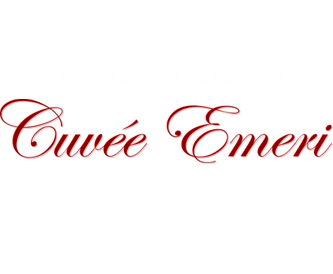
01. Genesis
Preserved by the clay court of the chateau cellar for many years, a treasure was waiting to be discovered. A bottle of wine, sealed with emery, glass blown by hand, evidence of an ancient know-how.
With some emotion, the man who discovered it also dug out a 200-year-old past, loaded with history and mysteries.
Who buried it? How long had it been there exactly? Why a heart-shaped glass stopper? Was it a special manufacturing for a wedding or a love symbol from the winemaker to this vintage ?
02. The Estate
This bottle is obviously an evidence of the feature of this chateau where almost nothing has changed for 200 years. A soil unspoiled by chemical pollution, on top of a hill, and therefore not subject to untimely runoff, with unique fauna and flora including species extinct elsewhere.
A wine born from the will of men to be fair, content at home, with honor and senses, while preserving the wealth of their land.They collected this legacy with an acute awareness, as future go-betweens of this little heaven.
Old, perhaps medieval, grape varieties and winemaking methods showing that harmony between nature, man and productivity does exist. A chalky-clayey soil at the center of prestigious estates such as beausejour becot and angelus, with a southwest exposure.
03. The Adventure
As a heir of this culture,, Adrien David Beaulieu, when he found out about his uncle’s wonderful discovery, challenged himself to uphold the tradition and to create a special cuvée according to the methods prevailing in the year when the bottle was estimated.
He then selected the highest plots in the vineyard, the « Peycocut plots », the remnants of saint-Emilion area before the time of pesticides. The two emblematic grape varieties of the appellation are grown there. Cabernet Franc and Merlot.
Merlot is the" red tailed " type Merlot which is characterized by its small size and low yields fostering excellent concentration. It has always been grafted by David-Beaulieu family and was achieved by mass selection.
Cabernet Franc is characterized by its precocious maturity that comes from the type of rootstock. It is therefore easier to control its evolution and consequently to harvest in excellent conditions of maturity.
04. Respecting the ground
To preserve the untouched ground, no tractor circulates: a draft horse performs the tasks. Soils are less compacted, which fosters the flow of water and the life of invertebrates and micro- bacterial organisms. The soil of these plots is therefore richer in assistants.
Treatments to protect the vines are those applied in the 19th century with the Bordeaux bouillie, sprayed by men. The small size of the plots and the method used for treatments ensure healthy vines and fruit.
Once the grapes begin to mature, they are harvested and sorted out by hand and deposited in a wooden crate. Vinification is carried out without using pumps, by manual treading, just like our ancestors.
Protected in an old winery with perfect micro -bacterial balance, malolactic transformation is raw, carried out without purchased bacteria.
This wine will be matured for 18 months in 50-percent-new oak barrels.
05. The Bottle
The one last thing missing was the touchstone in respecting faithfully of this old discovery : the bottle and sealing method. A hundred miles away from his land, Adrien David Beaulieu meets a glassblower. The Meilleur Ouvrier (best worker) in France studied the bottle carefully and succeeded in finding the chemical components used in the glass and its glass stopper, the bottle and the stopper being a different composition.
He then manufactured the wooden mold which enabled a perfect replica of the bottle. This method, inherited from old know-how and craftsmanship, requires the replacement of the mold every 50 bottles, as the heat slowly distorts the glass.
The last step: the sealing. The glass stoppers are molded in a steel mold to the exact dimensions of the original. It requires a 30-minute manual lapping of the stopper with a micro-diamonded reamer for the bottle to become completely sealed.
The wine, maturing very slowly in a closed system, will give birth to an exceptional production: «la cuvée Emeri».